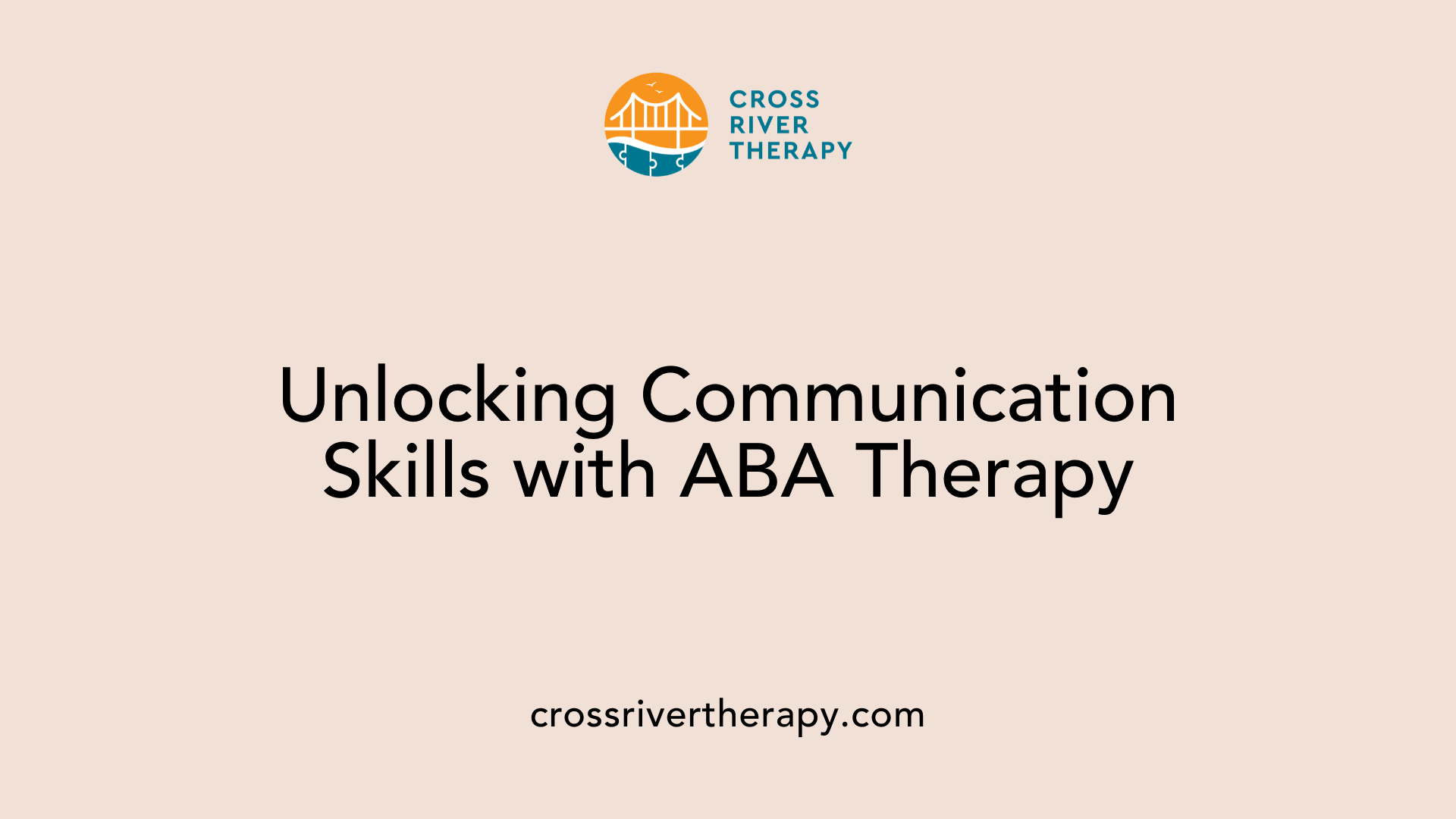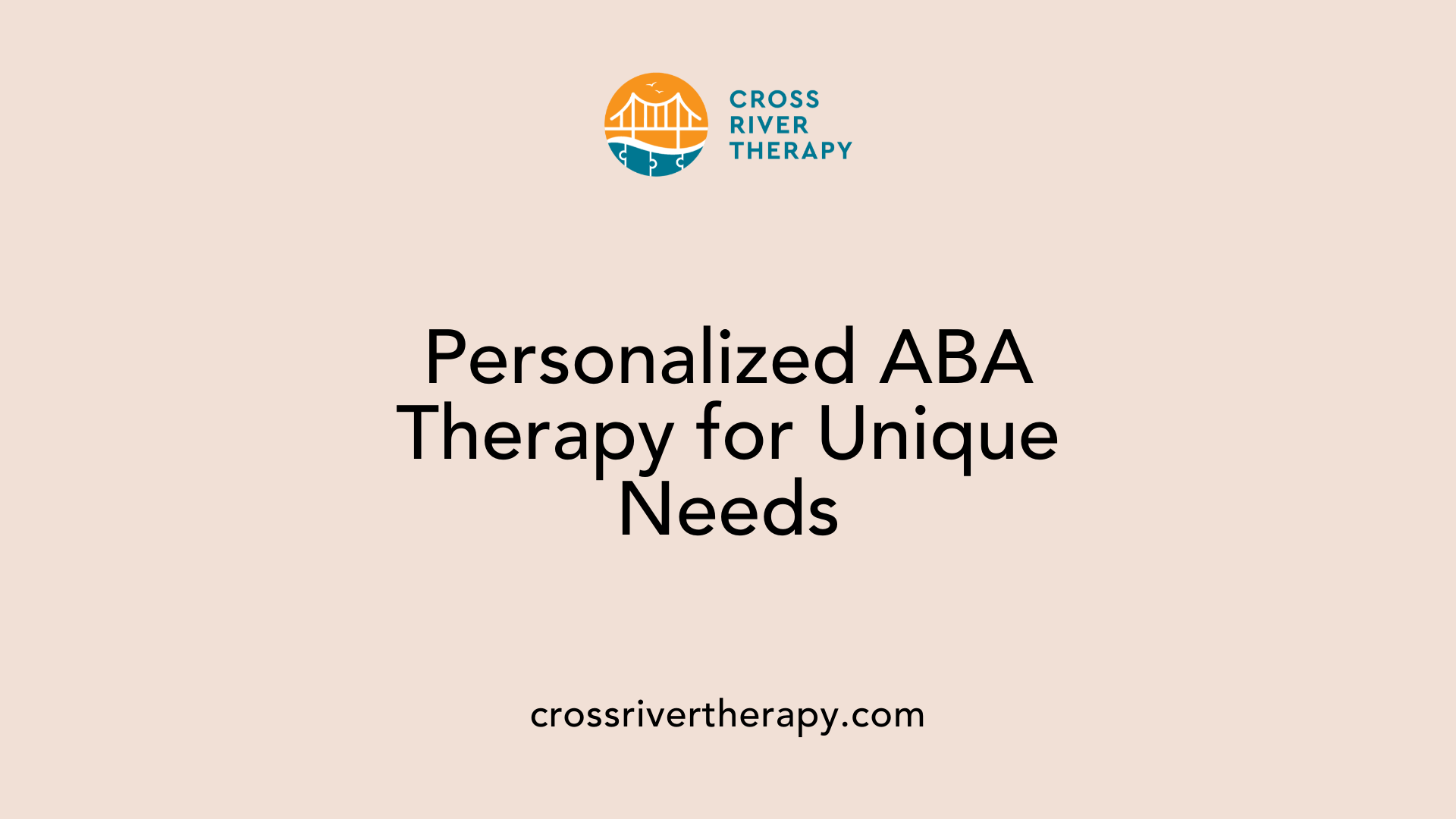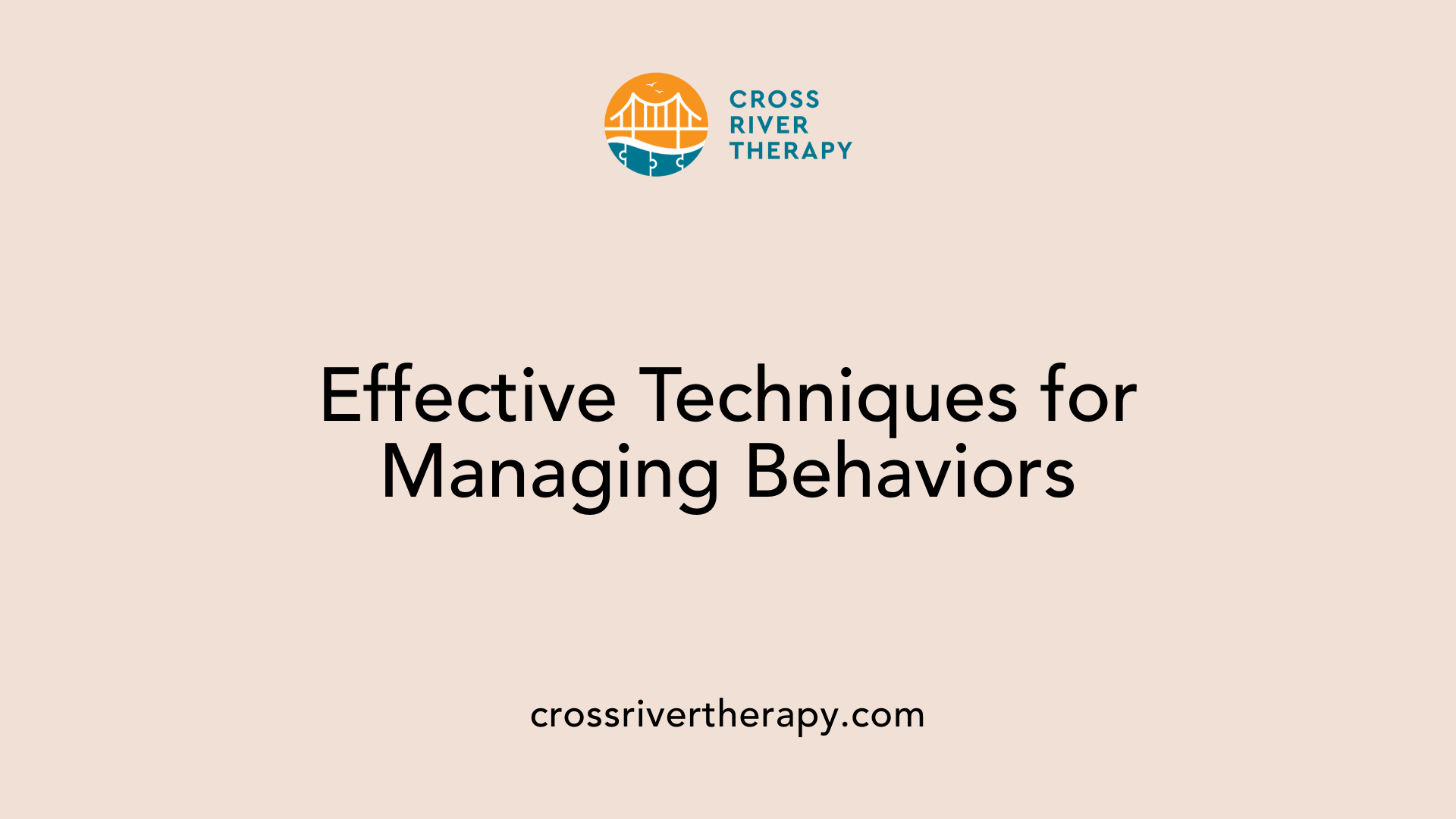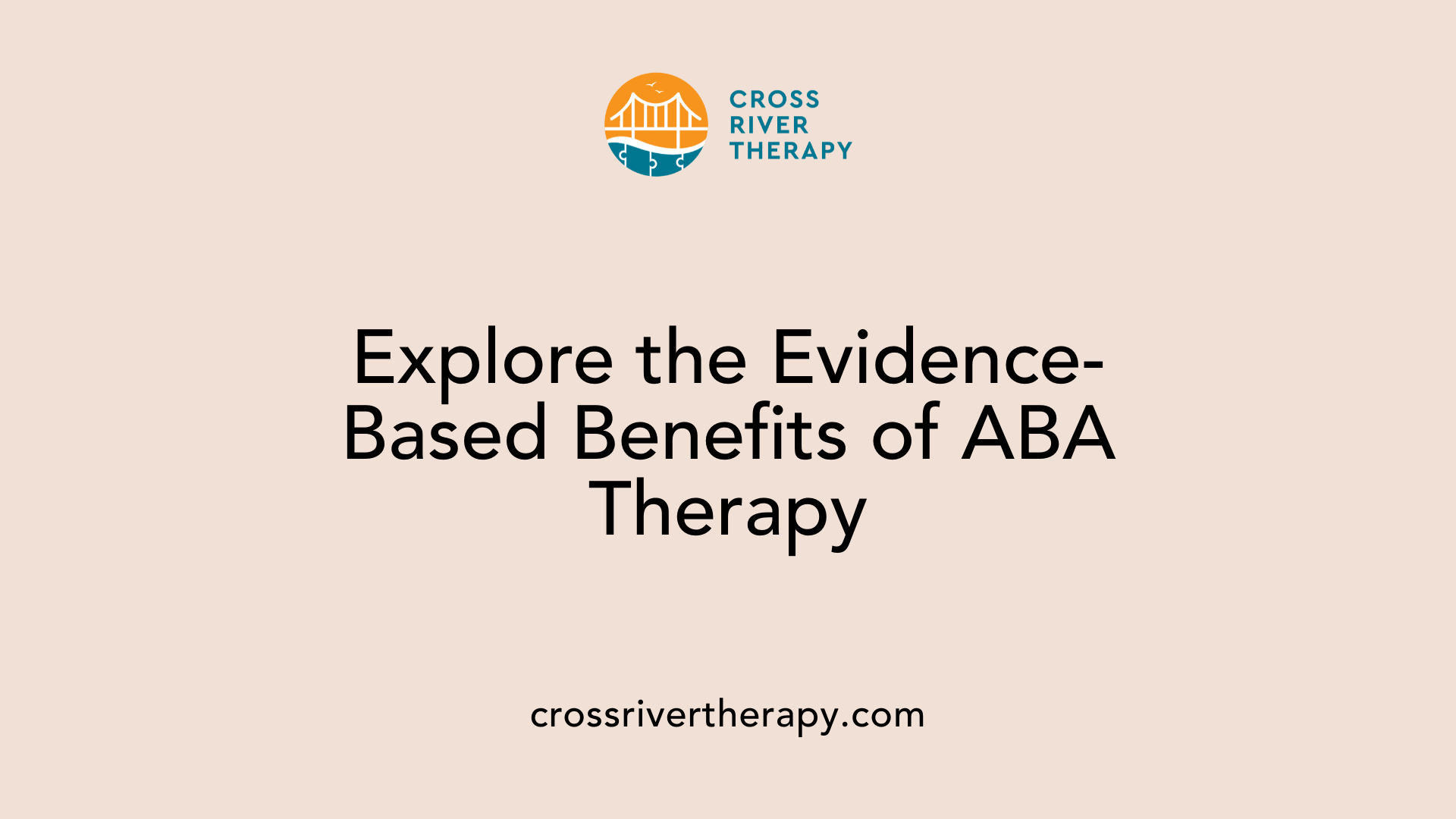How ABA Therapy Helps Children with Autism Improve Self-Expression
Unlocking Self-Expression in Children with Autism through ABA Therapy
Understanding ABA Therapy
Applied Behavior Analysis (ABA) therapy has emerged as a leading intervention for children with autism, focusing on enhancing communication, social skills, and self-expression. As a scientifically based therapeutic approach, ABA therapy strategically uses positive reinforcement to promote helpful behaviors and improve overall quality of life for individuals with autism.
What is ABA Therapy and Its Role

Purpose of ABA therapy
ABA therapy, or Applied Behavior Analysis, is a scientifically-based therapeutic approach designed to help individuals, particularly children with autism and related developmental disorders, improve socially significant behaviors. Its primary goal is to boost helpful behaviors like communication, attention, and social skills while reducing hindering behaviors that disrupt learning.
Basic principles of ABA
At the heart of ABA are core principles, including positive reinforcement. This strategy encourages the repetition of desired behaviors by rewarding children when they successfully demonstrate those skills. Moreover, ABA therapy is highly individualized; each program is tailored to the child's unique strengths, challenges, and goals across various skill areas such as communication, self-care, and academics.
Key benefits and goals of ABA
Research indicates that long-term ABA therapy, involving 25 to 40 hours a week for 1 to 3 years, can greatly enhance outcomes for many children with autism. This includes improvements in intellectual functioning, language abilities, and daily living skills. Additionally, ABA helps children develop the essential life skills necessary for independence—like dressing and feeding—thereby fostering a greater sense of self-sufficiency and confidence.
Ultimately, ABA therapy strives to equip children with the skills they need to successfully navigate social situations and improve their quality of life.
Enhancing Communication Skills

How does ABA therapy enhance communication skills for children with autism?
ABA therapy is pivotal in enhancing communication skills for children with autism through targeted, evidence-based interventions tailored to their unique needs. Key strategies include:
- Use of Visual Aids: Techniques like the Picture Exchange Communication System (PECS) allow children to communicate using images. This method is particularly beneficial for those who struggle with verbal communication, enabling them to express their needs independently.
- Play-Based Therapy: Play therapy fosters a comfortable environment where children can explore their emotions and practice communication. Activities that involve role-playing and creative expression help children learn social cues and improve their language skills in a relaxed setting.
- Modeling and Scripting: Through structured interactions, therapists demonstrate appropriate language use and social exchanges. Scripting provides children with specific phrases they can utilize during social interactions, promoting smoother conversations.
Impact on expressive and receptive language
By focusing on both expressive and receptive language development, ABA therapy broadens a child's communication capabilities.
- Expressive Language: Children learn to articulate thoughts and feelings more effectively, increasing their vocabulary and confidence in social settings.
- Receptive Language: The therapy emphasizes understanding verbal instructions, teaching children to respond appropriately in conversations. This development builds engagement and supports better interactions with peers and caregivers.
Overall, ABA therapy is essential in improving verbal and non-verbal communication skills, significantly enhancing the overall quality of life for children with autism.
Tailoring ABA Therapy to Individual Needs

How is ABA therapy tailored to meet the individual needs of children with autism?
ABA therapy stands out for its commitment to individualized treatment plans. Each child undergoes a thorough assessment that highlights their strengths and areas needing improvement. This information guides therapists in crafting personalized intervention plans aimed at fostering growth in communication, social skills, and daily living abilities.
Therapeutic sessions are typically delivered in a one-on-one setting, utilizing a variety of evidence-based techniques. These may include:
- Positive reinforcement: Rewarding children for desired behaviors to encourage repetition.
- Discrete trial training: Breaking skills into manageable components for focused learning.
- Functional communication training: Teaching children effective ways to express themselves.
Assessment and Continuous Adjustment
An ongoing process of data collection during therapy sessions plays a crucial role in customizing treatment. This continuous feedback allows therapists to fine-tune their strategies based on the child’s progress or any emerging challenges. If certain techniques aren’t yielding the expected results, adjustments can be made swiftly, ensuring each session remains effective.
Family Involvement
The success of ABA therapy is further enhanced by active family involvement. Parents and caregivers are encouraged to participate in the therapeutic process, reinforcing positive behaviors at home. This collaborative approach not only supports the child's learning but also promotes consistency across different environments, fostering optimal development and self-expression.
Managing Problematic Behaviors

Techniques to Address Aggressive Behaviors
ABA therapy addresses aggressive behaviors by dissecting these actions into comprehensible components. Through careful observation and assessment, therapists identify triggers contributing to aggression and develop targeted intervention strategies. Techniques used include behavioral momentum, which gradually introduces easier tasks before tackling more challenging situations, reducing the likelihood of aggressive outbursts.
Role of Positive Reinforcement
A cornerstone of ABA therapy is positive reinforcement. By rewarding desirable behaviors—such as appropriately expressing frustration—children learn to replace aggression with more constructive actions. Rewards can range from verbal praise to tangible incentives, making the learning experience enjoyable and effective. This strategy not only helps in reducing aggression but also promotes overall positive behavior change.
Family Collaboration in Behavior Management
Family involvement is crucial in ABA therapy. By including parents and caregivers in the therapeutic process, strategies can be more effectively communicated and reinforced at home. Direct participation ensures that caregivers understand the techniques used, fostering consistency in behavior management across different environments. This collaborative approach significantly enhances the child’s ability to manage their behaviors and improves their quality of life.
Evidence-Based Benefits of ABA Therapy

What are the evidence-based benefits of ABA therapy for children with autism?
ABA therapy is an evidence-based intervention designed for children with Autism Spectrum Disorder (ASD) that significantly enhances communication, socialization, and self-expression skills. Research underscores the importance of early and intensive ABA therapy, with studies indicating requires between 25 to 40 hours a week over 1 to 3 years, displaying remarkable improvements in expressive language and social skills.
The individualized approach of ABA therapy makes it unique; programs are tailored to fit each child’s unique needs and strengths. This customization ensures that treatment targets specific goals, such as increasing helpful behaviors and decreasing problematic ones. Positive reinforcement strategies embedded within ABA encourage constructive behaviors, particularly in fostering language use and emotional regulation.
Long-term improvements
The long-term benefits of ABA therapy are well documented. Children who undergo this therapy often demonstrate improved daily living skills, better emotional regulation, and enhanced independence, all of which are crucial for their overall quality of life. In many cases, children can articulate their feelings and thoughts more effectively, promoting healthier self-expression in social settings.
Academic and social benefits
Furthermore, ABA therapy has been shown to foster academic success by equipping children with essential life skills, such as communication and self-care. With the help of ABA, children learn essential social cues and behaviors that enhance their ability to build relationships, facilitating smoother interactions with peers and family. Overall, the findings reveal that ABA therapy not only aids in developing functional skills but also plays a crucial role in preparing children for future independence and fulfilling lives.
Play Therapy as a Vital Component
Integration with ABA
Play therapy serves as an essential complement to ABA therapy, enriching the therapeutic experience for children with autism. By incorporating playful elements into the structured environment of ABA, children engage with learning actively and enjoyably. This integration fosters a natural development of skills while allowing children to express themselves freely. The therapeutic play setting enhances the motivation to participate, which is crucial for effective learning.
Benefits of play-based learning
Play-based learning offers several advantages for skill development. It nurtures critical areas such as social interaction, emotional regulation, and communication skills. During play sessions:
- Motor Skills Development: Engaging use of toys enhances fine and gross motor skills.
- Social Benefits: Children learn to take turns, share, and navigate interpersonal dynamics, reducing isolation.
- Emotional Expression: Players can express feelings through actions and scenarios, aiding in emotional literacy.
Role in enhancing self-expression
Through play therapy, children can transform frustration or negative behaviors into constructive self-expression. Techniques like using toys as communication tools allow children to articulate needs and emotions efficiently. This fosters:
- Increased Confidence: Mastery of play interactions builds self-esteem.
- Creativity: Engaging in imaginative scenarios enhances creative expression.
- Problem-solving Skills: Play encourages flexible thinking, promoting adaptability in various situations.
By leveraging play as a medium for learning, both ABA and play therapy work together to promote holistic development and meaningful self-expression in children with autism.
Fostering Self-Expression through Creative Activities
Role of Art and Music
Creative activities like drawing, painting, and music play a vital role in fostering self-expression among children with autism. These mediums allow children to externalize emotions they might struggle to verbalize. This form of expression can be incredibly therapeutic, helping them communicate feelings and thoughts effectively.
Identifying Individual Talents
Engaging in art and music can also assist neurodivergent children in discovering their unique talents and interests. Identifying these skills can improve self-identity, enabling children to focus on their strengths. Such positive reinforcement of talents can lead to enhanced self-esteem and motivation.
Building Self-Confidence
The importance of creative activities extends beyond just self-expression. Participating in art and music can help improve self-confidence as children receive praise for their efforts. When children create something tangible, it can reinforce a sense of accomplishment, making them more likely to engage in social interactions and share their creations with others.
In sum, fostering self-expression through creative activities supports children on the autism spectrum by enhancing emotional awareness and building essential skills for their overall development.
Preparing for Independence
Development of Life Skills
ABA therapy is instrumental in developing essential life skills among children with autism. Through structured programs, children learn crucial tasks such as dressing, grooming, and feeding themselves. This not only fosters independence but also enhances their self-confidence and ability to handle daily activities.
Adapting to Real-World Situations
Children engage in practical scenarios where they can practice skills in a guided manner. Role-playing and real-world practice help them understand expectations and social cues. This gradual adaptation to real-life situations paves the way for smoother transitions into various environments, boosting their capacity to function autonomously.
Building Self-Sufficiency
With ABA's focus on routine and goals tailored to individual needs, children gain a sense of self-sufficiency. The therapy employs positive reinforcement to encourage desired behaviors, ensuring that children not only learn but also enjoy their learning process. This approach instills values of responsibility, ultimately preparing them for greater independence as they grow.
The Collaborative Approach in ABA
Multi-disciplinary Team Involvement
A successful ABA therapy program often involves a multi-disciplinary team. Professionals from various fields work together to create and implement individualized treatment plans. This collaborative approach ensures that all aspects of a child's development are addressed holistically. Specialists in areas such as psychology, special education, and developmental therapy contribute their unique expertise, thereby enriching the therapy's effectiveness.
Cooperation with Speech and Occupational Therapy
Integrating speech and occupational therapy into ABA programs can significantly enhance a child's self-expression and communication skills. Speech therapists focus on verbal and nonverbal communication, aiding children in learning to articulate their needs and emotions. Meanwhile, occupational therapists help develop essential life skills and fine motor abilities. Together, they create a synergistic effect that promotes overall development and aids in the expression of feelings and thoughts.
Importance of Parent Engagement
Parental involvement is crucial in ABA therapy. When parents are engaged, they reinforce strategies used during therapy sessions at home. This not only helps solidify learning but also encourages children to practice their communication and social skills in a familiar environment. Research indicates that a family-centered approach leads to more significant progress, emphasizing the need for cooperation among therapists, parents, and caregivers.
Empowering Children with Autism
ABA therapy stands as a beacon of hope for children with autism, enhancing their ability to express themselves and engage with the world around them. By focusing on individualized strategies and collaborative efforts involving families and other therapy specialists, ABA therapy not only bolsters communication skills but also fosters independence and self-confidence. As we continue to understand and embrace the diverse needs of children with autism, ABA therapy remains a vital tool in nurturing their growth and ensuring their inclusion in society.
References
- Applied Behavior Analysis (ABA) | Autism Speaks
- Healthy Self-Expression and Autism: 4 Incredible Benefits
- 4 Ways ABA Can Help Children with Autism
- 6 Life-Changing Benefits of ABA Therapy for Children with Autism
- Benefits of ABA Therapy and Early Intervention for ASD Children
- 5 Tips to Fostering Expressing Emotions with Autism
- Play therapy in children with autism: Its role, implications, and ...



